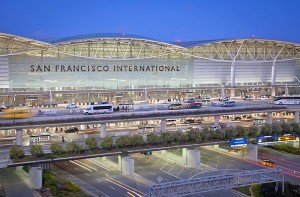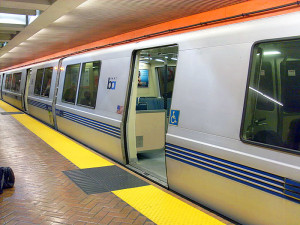 As I travel around San Francisco every day I’ve been noticing changes that aren’t looking very good anymore and I’m beginning to believe the party is over.
As I travel around San Francisco every day I’ve been noticing changes that aren’t looking very good anymore and I’m beginning to believe the party is over.
People aren’t smiling anymore. People aren’t going out as much anymore. People talk more about how tough it is to live here than how great it is to live here. These are signs that there is a shift in San Francisco happening. I do run into people that aren’t like this, but they tend to be older and in more traditional careers that treat their employees like, well, employees. These are usually older people in their mid 40’s at least who have a job that isn’t usually tied to the tech industry and and have lived here for a long time so they’ve got themselves a good set up. Maybe they were able to buy a house when a person could actually buy a house who wasn’t a millionaire. 20 years ago when my wife and I got married we could have bought a house for $200,000. It would have been small, but it still would have been better than some of the apartments that people are living in now that a little more than oversized porta-potties.
Jobs now in the city are paying less at a time when money is worth less unless you’re a programmer which then makes you salaried with little time off to enjoy the things in the City. Even back in 2010 I was being offered jobs at almost twice what the same jobs are going for today. There are a proliferation of contractor positions, but those jobs treat you more like an employee without the benefits and contractor jobs used to pay better than employee positions because they could drop you at any time. Now contractor positions pay less and give you set hours to work and if you take a sick day then be careful because they’ll probably drop you for not doing your job. That’s not the way contractor positions are supposed to work, but very few people are making enough money to take these companies to court since lawyers aren’t very cheap.
The people I’ve noticed who aren’t suffering as much are construction workers, school bus and muni drivers, firemen, police. These are jobs that are more traditional in that you’re paid reasonably with benefits, time off, paid overtime. Personally I’d give up the free lunch and snacks for an extra couple of bucks an hour because I can bring my lunch or buy it cheaper and it’s usually better tasting and better for me. I met a guy worked for our local garbage collectors. He’s making $27/hour and told me the garbage truck drivers make $47/hour. OK, you have to deal with rats and garbage, but that’s a better living than a graphic designer with a Master’s degree being offer a job for $17/hour by a startup as a contractor [ok, not all are like that, but there’s quite a few out there]. Of course there are the doctors and lawyers which there are a lot of in San Francisco as well as health care workers who also make decent salaries. These are the people who smile now. These are the ones that go out to dinner on the weekends and sometimes even during the week. They have the money and time on their hands to really appreciate the City.
I laughingly remember five years ago when I’d pick up kids fresh out of college who would say things like, My Dad got me an apartment and gave me his credit card and is giving me a year to make it in San Fran. Oh joy, Daddy just paid for a year long spring break and my right hand twitched in a smacking motion because they said San Fran [side note: I would even accept Frisco over San Fran]. These people were always going out to a bar or some nightclub every night of the week and they were always asking for a bottle of water in the mornings because they were so hung over from the night before. These people are gone now. I called them long term tourists because I knew they were going to go back home eventually.
Things like that have to happen in order to keep San Francisco what it is, so while even I am struggling to get by right now I know for me it will eventually get better because I was born and raised here and have been through this before. I can handle it. I know where to get a burrito for less than $15 or not spend $4 or more for toast. I don’t take Uber or Lyft to work everyday or order gourmet artisanal food delivered from one of the new food delivery startups that pops up every other week.
San Francisco will never return to the old days and by old days that depends on your age. My Mom isn’t around anymore to remind me she used to pay 5¢ for a candy bar. I find myself starting to say things like that, but it’s more like I remember going out to a bar with $20 for the evening and coming home with change…and I used to drink a lot.
Change is good, but change can also be painful. Let’s hope this leads to something better in the end.



















